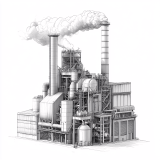why opt for revamping?

economic savings
Revamping can significantly reduce costs, as it allows existing machines to be modernised instead of buying new, often much more expensive ones.

Performance Enhancement
By upgrading specific components, you can achieve performance comparable to that of a new machine, improving efficiency and productivity.

Less downtime:
Revamping takes less time than buying, delivering and installing a new machine, thus reducing production downtime.

Sustainability
Recovering and modernising an existing machine reduces the environmental impact compared to the production and disposal of a new one, contributing to more sustainable business management.

Compatibility with existing infrastructure
Revamping makes it possible to keep the machinery within the existing production system, avoiding the costs and complications of adapting the plant to new equipment.

Customisation
With revamping, you can choose exactly which parts to upgrade or replace, adapting the machine to your specific operational needs.